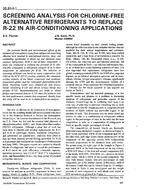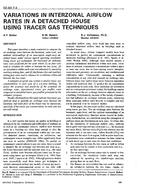-
-
Available Formats
- Options
- Availability
- Priced From ( in USD )
-
Available Formats
-
- Immediate download
-
$16.00Members pay $7.00
- Add to Cart
Customers Who Bought This Also Bought
-

DE-93-02-3 -- Air Conditioning with a Combination of Radi...
Priced From $16.00 -

DE-93-06-1 -- Screening Analysis for Chlorine-Free Altern...
Priced From $16.00 -

DE-93-07-3 -- Variations in Interzonal Airflow Rates in a...
Priced From $16.00 -

DE-93-12-2 -- Measured Performance of Relocated Air Distr...
Priced From $16.00
About This Item
Full Description
In the event of a fire, there is a rising concern for the safety of persons who cannot travel building emergency exit routes in the same manner or as quickly as expected of able persons. One proposed solution for providing safety for persons with mobility limitations is the concept of areas of refuge (AOR) where these people can "safely wait" until they can be assisted in leaving the buildings. Presents information about the design of smoke control systems to prevent smoke infiltration into an AOR. Pressure differences produced when windows break, both with and without wind, can be significant, and the design of a smoke control system for an AOR needs to address these pressure differences. Identifies the need for wind data specifically for the design of smoke control systems. The pressure fluctuations due to opening and closing building doors during fire situations can also be significant, and the design of a smoke control system for an AOR needs to address these fluctuations. An example of analysis incorporating the pressure effects of broken windows, wind, and open doors illustrates the feasibility of designing smoke control systems for areas of refuge.
KEYWORDS: designing, smoke ventilation, pressurisation, fire, safety, occupiers, handicapped people, smoke, air flow, wind pressure, windows, doors, buildings.





